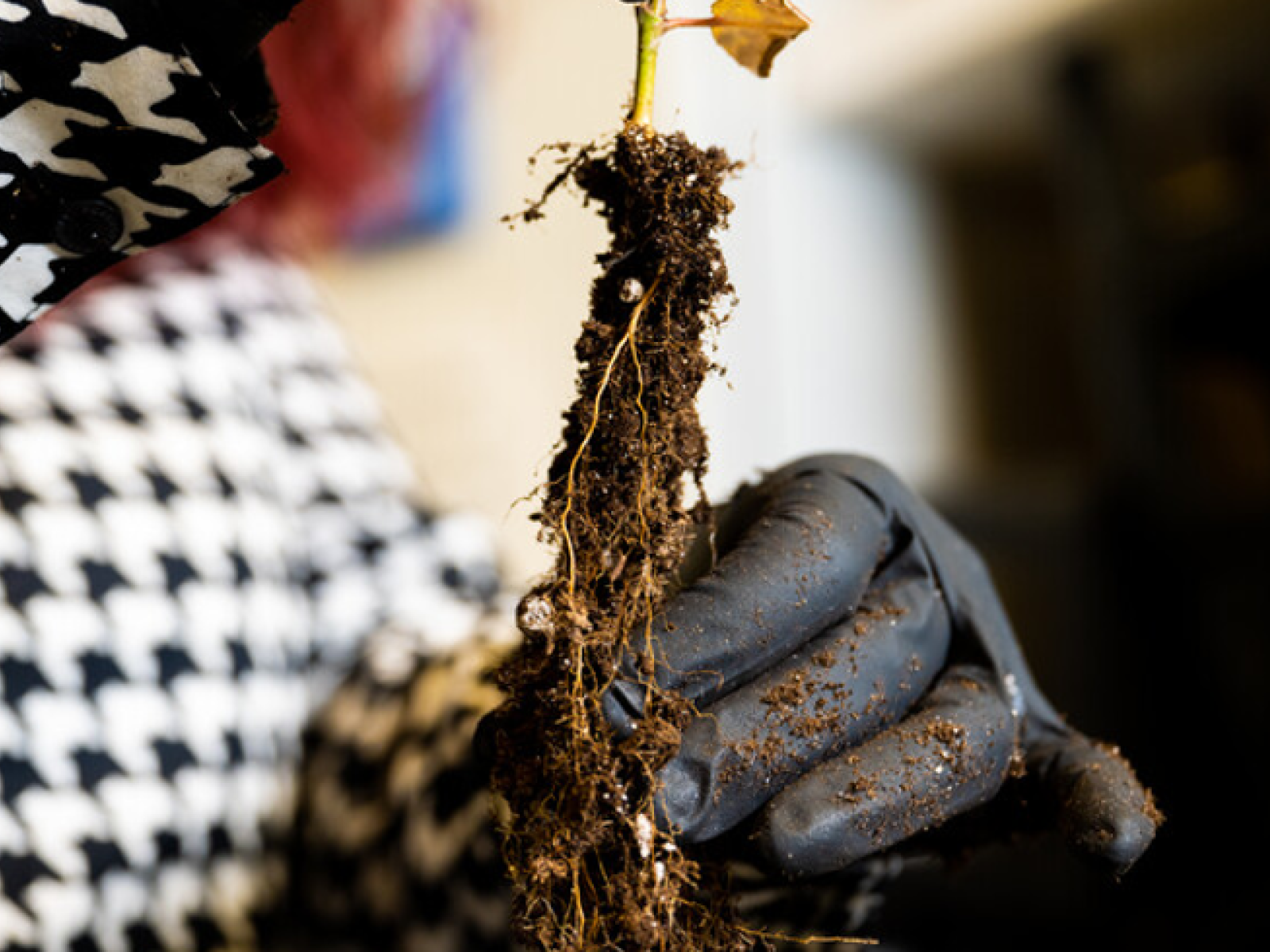Fine Roots Make the Difference in Metabolomes and Microbiomes
Sequencing of microbiome and characterization of metabolome revealed significantly different functions of fine root systems from four temperate tree species in a 26-year-old garden forest

Researchers prepare tree roots for analytical measurements by checking root morphology and deciding how to separate fine roots from the rhizosphere.
(Photo by Andrea Starr | Pacific Northwest National Laboratory)
The Science
Bacteria and fungi live together on the surface of plant roots, which can promote symbiotic interactions with the plant. Plant roots that are especially fine can support various niches for their microbial proliferations but, traditionally, microbiome studies did not examine fine root systems separately from the rhizosphere. The current study shows that the microbiomes in the rhizoplane and rhizosphere are distinctive in four different tree species, and they function differently based on the metabolome profiles that root systems provide to the microbiome as possible nutritional sources.
The Impact
Deciphering host-microbial relationships requires an intricate understanding of the physiology and morphology of the host—in this case, plant roots. Results show that various root compartments are differentially structured by root. Furthermore, our data provide evidence that microbial composition is spatially structured according to root functional type, and there are selective pressures for each root compartment for different root functional types. These data emphasize the need to scrutinize root physiology when examining root-microbial feedback because there’s more information than we realized within individual root compartments.
Summary
Microbiome clusters in plant roots play critical, interactive roles with the plant, or host. But in microbiome studies, researchers rarely focus on fine roots—two millimeters or less—and their different functional roles.
Using a 26-year-old common garden forest, researchers in this study collected fine root samples from four temperate tree species (three deciduous and one coniferous) that varied in their morphology. Through gene sequencing and metabolomic analysis, researchers observed that fine roots compartmentalize functions, and within these compartments, the bacteria and fungi vary. This is likely due to if and how nutritional resources are available in each compartment.
Additionally, researchers observed differences in data from rhizoplanes versus rhizospheres. Bacteria in the rhizoplanes—the root surface and immediately surrounding soil particles—as well as the root metabolome and potential microbial functions, differed between absorptive and transportive fine roots. But bacteria in the rhizosphere—the biogeochemical soil in the roots’ vicinity—did not change. These findings show the importance of root function when examining root-microbial relationships, emphasizing different host-selective pressures imparted on different root microbiome compartments.
Contact
Young-Mo Kim, Pacific Northwest National Laboratory, young-mo.kim@pnnl.gov
Funding
This research was supported by the USDA National Institute of Food and Agriculture (NIFA) Federal Appropriation under Project #PEN0 4628 (Accession #1014131), Project #PEN0 4744 (Accession #1023222) and Project #PEN0 4651 (Accession #1016233). Analysis and writing were partly supported by USDA ORG Project PENW-2019-03513 and the National Science Foundation (NSF) Centre for Research on Programmable Plant Systems (CROPPS; Grant number #DBI-2019674). A portion of this research was performed on a project award (doi. org/10.46936/ltds. proj.2021.60134/60000418 awarded to WLK, THB and DME) from the Environmental Molecular Sciences Laboratory, a DOE Office of Science User Facility sponsored by the Biological and Environmental Research program under Contract No. DE-AC05-76RLO 1830.
Published: April 15, 2024
King et al. “Functionally discrete fine roots differ in microbial assembly, microbial functional potential, and produced metabolites." Plant, Cell & Environment 46 (12): 3919-3932 (2023).